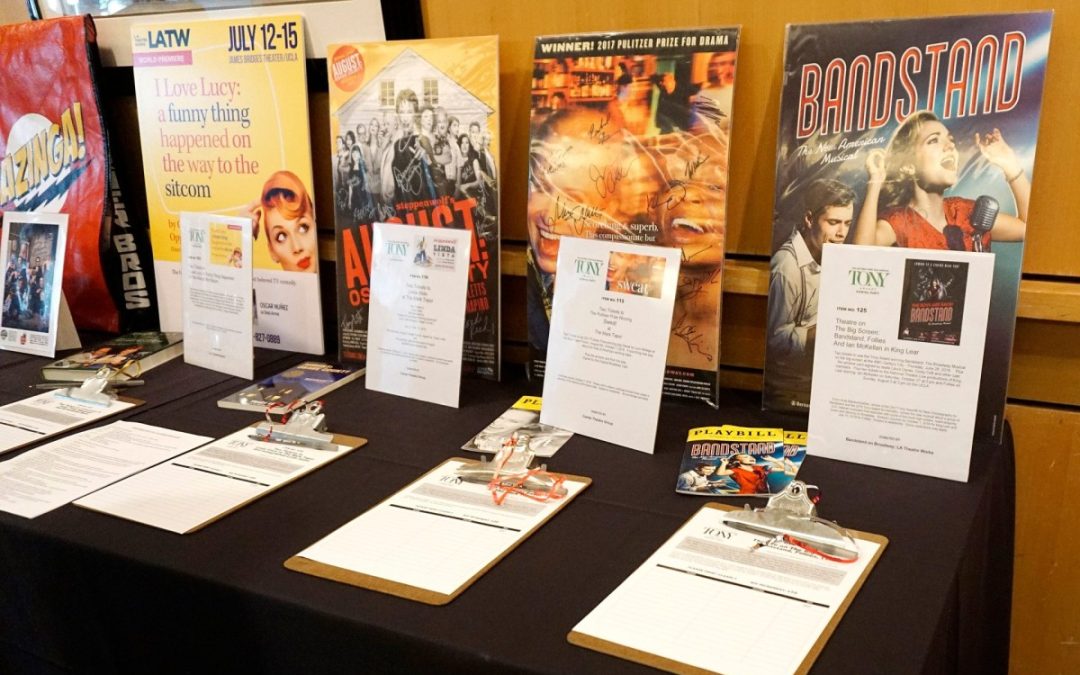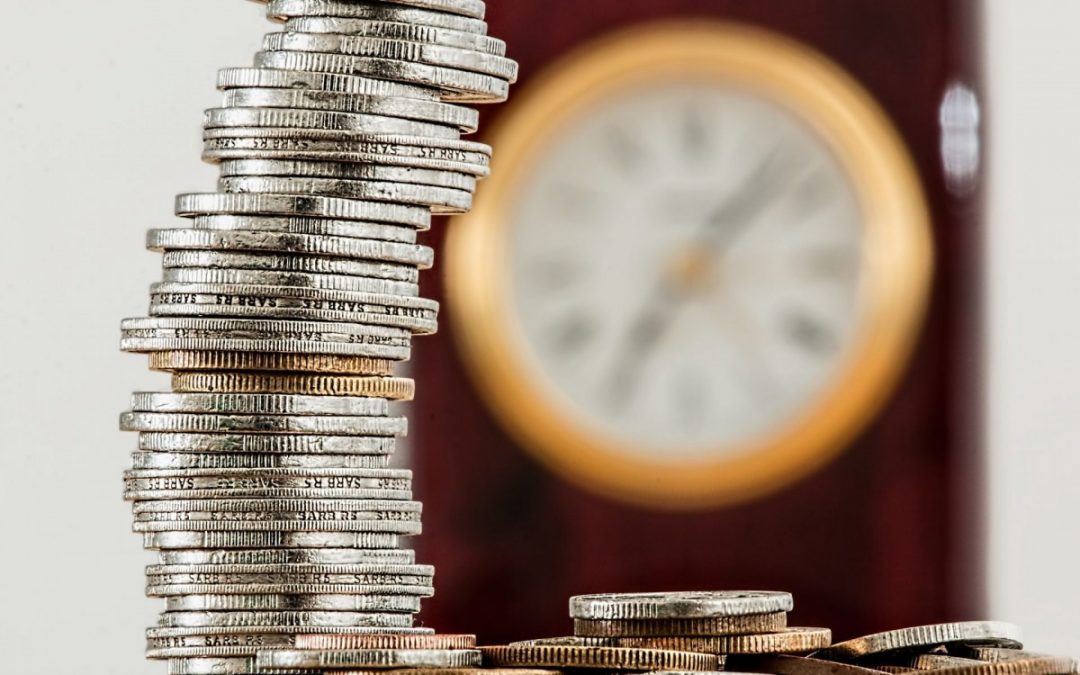
May 31, 2023 | Auction Tips, Event Tips
Fundraising events are a vital source of revenue for organizations, and auctions are one of the most effective ways to generate funds. However, conducting a successful auction is not as easy as it sounds.
Although some organizations will ask a volunteer or local celebrity to conduct their auction in an effort to save on costs, it often becomes apparent that conducting a successful auction requires specialized skills and expertise. This is where a benefit auctioneer comes in! Hiring such an auctioneer can make a significant difference in the success of your fundraising event.
Let’s start with a simple question: What is a benefit auctioneer? A benefit auctioneer is a professional who specializes in conducting auctions at fundraising events. Their role is not only to facilitate the auction but also to create an engaging and exciting atmosphere that encourages guests to bid generously. A benefit auctioneer must have excellent communication and interpersonal skills to connect with guests and build a rapport with them.
A benefit auctioneer with a BAS (Benefit Auction Specialist) certification has undergone extensive training through the National Auctioneers Association, and has demonstrated a high level of proficiency in conducting benefit auctions. This certification provides event organizers with the assurance that they are hiring a qualified and experienced professional. Currently, there are only about 200 individuals in the United States who hold this certification, and our very own John Bessolo is one of them!
In addition to facilitating a great live auction on your event day, a benefit auctioneer can also help to advise and guide you throughout your event planning process. Below are some of the ways that a benefit auctioneer can help make your event great:
- Maximizing Revenue – A benefit auctioneer has the experience and expertise to maximize the revenue generated from the auction. They know the ins and outs of auctions and can provide guidance before your event day on the best auction items to offer, the order in which they should be presented, and how to structure the bidding process to encourage higher bids.
- Engaging the Audience – An auction is only successful if people are willing to bid on items. A benefit auctioneer knows how to create a fun and engaging atmosphere that encourages guests to participate in the auction. They are skilled in building excitement and energy in the room, which can help to increase the number of bidders and the amount of money raised.
- Professionalism – A benefit auctioneer, particularly one with a BAS certification, is a trained and experienced professional. They understand the importance of maintaining a high level of professionalism throughout the event. This includes everything from dressing appropriately to handling any unexpected situations that may arise during the auction. This can help to create a seamless and enjoyable event for guests.
- Networking Opportunities – A professional benefit auctioneer has worked with many different organizations and individuals. They can advise on ways to leverage your existing network to help benefit your fundraising event. They may also make recommendations on other event vendors, and may even connect you with organizations that may help you acquire items and experiences for your auction.
- Enhanced Guest Experience – A benefit auctioneer is skilled in creating a memorable and enjoyable experience for guests. They know how to engage with the audience and create an atmosphere of excitement and fun. This not only helps to increase the number of bidders and the amount of money raised but also leaves guests with a positive impression of the event and organization. A successful benefit auction can be the highlight of a fundraising event, and the right benefit auctioneer can help to ensure that guests leave feeling satisfied and happy with their experience.
Ok, you’re thinking this all sounds amazing…but what about the cost? It’s true that hiring a professional benefit auctioneer will cost more than having a volunteer do it. However, your benefit auctioneer is the one vendor who exists SOLELY to help you raise more money! Although a caterer, DJ, or photographer will absolutely help to enhance your event, none of them will be directly appealing to your guests for donations. The auctioneer serves as a representative of the organization, and most organizations report a substantial increase in fundraising success when they hire a professional to handle this most important task.
Pro tip: Many of our clients have found success by asking a sponsor to underwrite the cost of the auctioneer.
Hiring a benefit auctioneer can be an excellent investment for any organization. The benefits (pun intended) go far beyond just facilitating the auction itself. An experienced auctioneer can maximize revenue, engage the audience, save time and effort, provide professionalism, offer expertise in benefit auctions, provide networking opportunities, consulting, and enhance the overall guest experience.
If you are ready to work with a BAS professional, or just want to learn even more about what benefit auctioneers have to offer, feel free to reach out to us here at Johnny B. Auction!

Apr 26, 2023 | Auction Tips, Event Tips, Online Auction, Silent Auction
Silent auctions are a great way to increase your event revenue. However, like anything else in this world, not all silent auctions are created equal. There are numerous factors to consider when putting on a silent auction, and today we’re going to focus on the importance of curating your silent auction items.
Oftentimes, when an organization tells me their silent auction doesn’t do as well as they would have liked, it comes down to one of two reasons:
- They do not take the time to carefully select the items that go into the silent auction.
- They use it as a dumping ground for items that they do not know what to do with.
Your silent auction is a great place to make a lot of money, but throwing everything but the kitchen sink into it isn’t going to help you make that money. Just as with your live auction, you want to choose items that are exciting to your audience. By carefully choosing the right items, your donors will be much more interested in the silent auction, which will increase bidding and your silent auction revenue. It also provides a better experience for your guests, as they now associate great items and packages with the event instead of a smorgasbord of stuff.
Some people think that the more items you have, the more opportunities there are to make money. This is not the case. More items does not equal more money. More items means your audience has to sift through more tables, more packages, and try to keep track of what they are interested in (was that item we liked at table 12 or table 24…?). Think of it like a google search. You’re looking for your search inquiry, and you will most likely stay on page 1 of google. Maybe you’ll go to page 2, but you will never go to page 3. If you have a huge number of items, your audience will look at the first few tables of items (page 1), maybe go into the next few rows (page 2), but they’ll never get through all of the items, let alone be able to keep track of all of them (page 3 and beyond). Plus, a lot of the excitement of a silent auction is wondering who will get a given item. Too many items means fewer bids per item and fewer chances of getting into an exciting bidding war and creating a bidding frenzy at the close of your silent auction.
Too often, we see duplicates of the same (or very similar) items. While your crowd may value a professional photography package, when there are 4-5 of those in the silent auction, each one becomes less valuable. This often results in all of the items selling for well below value, rather than 1 or 2 of them being bid up to a higher price point; there is simply less incentive for guests to keep bidding when there is so much to choose from.
Now, I know what you might be thinking, “but we got these donations from people and/or local businesses, and I don’t want to hurt their feelings by rejecting them.” And that is a valid point. However, the purpose of your event is to make money for your organization, and if nobody is interested in the free dental cleaning that was donated to you, then having that time take up valuable real estate in your silent auction only for it to receive few (or no) bids doesn’t serve anyone. We also know that when individuals and/or businesses donate their items, they want to see those items make the organization money and feel they have made a valuable contribution! It can be disheartening for donors to see an item they donate receive no bids or sell at a small fraction of its value.
If you have a surplus of donated items that you’ve determined aren’t the best fit for your silent auction, consider using them for another fundraising opportunity – perhaps a raffle or online-only auction a few months down the road. And then when planning for your next event, try a more targeted approach to obtaining items that really fit your silent auction’s needs (more on this topic another time).
Allow me to share the story of a client of mine who was having these exact problems. They received tons of donations from their community, but they didn’t consider whether the items they were getting were right for their donors. They would spend hours writing up descriptions for all the items, packaging the items into baskets and boxes, and displaying them in a huge silent auction area. At the end of the evening, only around 45% of the items would sell. The others would have no bids. They were beyond frustrated and disappointed.
The following year, they looked at me and said, “Johnny, we’re not doing a silent auction this year. It’s just not worth it and we don’t make enough on it to warrant the work.” While I understood the frustration, I urged them not to do this. Completely giving up their silent auction would have meant giving up a good revenue stream. It’s not that the silent auction doesn’t work, it’s that the wrong items were in the silent auction.
So, I did what any good benefit auctioneer would do: I looked at the data! After carefully reviewing many years of silent auction data, we were able to come up with a specific list of items and packages that got high traffic from their guests. The client agreed to give it another go, and that year, there wasn’t a single silent auction item left. All items received bids, with a heavy majority receiving multiple bids. Using about 60% less items than they had the previous year, and the assortment carefully selected, they had increased their silent auction revenue by 80%! Now, every year, we sit down and look at the previous year’s data and work to select the right mix of items and categories for the donors to make sure we are always capitalizing on the silent auction. At the end of each evening, the client never feels as though we have left any money on the table.
Don’t let your silent auction be a place for overflow items! It is a great place to make money for your organization! If you’re having trouble with your silent auction, it might just need a little tweak to become your great event revenue generator. If you need any help with it, feel free to contact us at info@johnnybauction.com.

Apr 9, 2019 | Auction Tips, Event Tips
Sticking to the Schedule is Important for Increased Revenue at Your Fundraising Event
Putting on a fundraising event is no easy task. There are a lot of moving pieces that need to be taken into consideration: where is the event going to take place? Who’s going to be invited? Are we going to have a silent and live auction? What items are we going to get for out auction? What kind of food are we going to serve and how? Once these, and a large number of other questions are answered, we then ask ourselves: how are we going to fit this all into one night?
Often times, a timeline for the evening is put together as a “rough guide” for how the events of the night should play out. But what many organizations don’t understand is that failing to follow a timeline actually leads to a loss in revenue at their fundraising event.
When an organization pushes back on the timeline (or doesn’t seem to have one at all), it can result in guests asking themselves:
- Can I trust the program?
- Is this going to push back the food service?
- How much longer is this going to go on?
Needless to say, it puts negative thoughts into the minds of your guests. This creates distrust and distracts from your organization’s objective of raising money for the event. If you were planning on serving dinner at 7:30pm, and you pushed it back to 8:00pm, your attendees are thinking to themselves “when is the food going to come out? I’m starving!” and that is going to be the main thing on their mind until the food arrives. Meanwhile, you might have someone on stage telling an emotional story relating to your organization’s mission and asking for donations, but a large portion of your audience isn’t paying attention because they are hungry and focused on when they will be fed.
Everyone has been to an event where the timeline has been off, and I believe that most everyone can agree that when you are attending an event and it is behind schedule, it can be frustrating. If your audience is frustrated, then they will be less likely to bid.
The example about pushing the dinner service back by 30 minutes is from an actual fundraising event. Do you want to know what the outcome was? I’ll tell you: By the time the food was served, it was almost 8:30pm. According to the original timeline, we were supposed to start the live auction at 7:50pm, but we didn’t get started until 8:40pm. The initial 30-minute delay created a 40-minute delay for the live auction. By the time the auction started, people were much less interested in the items, the organization’s cause, and were seeming ready to go home. By the end of the night, the organization felt just like the audience: upset and disappointed.
Thankfully, there is a part two to this story! After the issues they experienced with the timeline the first year, they understood the importance of staying on schedule and creating that smooth experience for the guests. Year two came around, doors opened 6:00pm, the silent auction closed at 7:15pm, and dinner was served on time at 7:30pm. When it was time to start the live auction 7:50pm, the feeling in the room was completely different from the year before. People were excited for the auction, they paid attention to stories that were being told about the organization’s mission and how they, and everyone in the room, were making a positive impact on the community. We started off the bidding and we started high. As the night went on, the bidding got even higher. The Fund-A-Need was also a big success. The difference in sticking to the timeline in year two saw an increase in gross revenue by over 40%.
There are many options that an organization has to increase revenue at their fundraising auction, and while the timeline is one of the most important, there are other options that organizations should look at as well. Johnny B. Auction® can help your organization figure out the best strategies and maximize your profits while giving your gets a fantastic experience.



